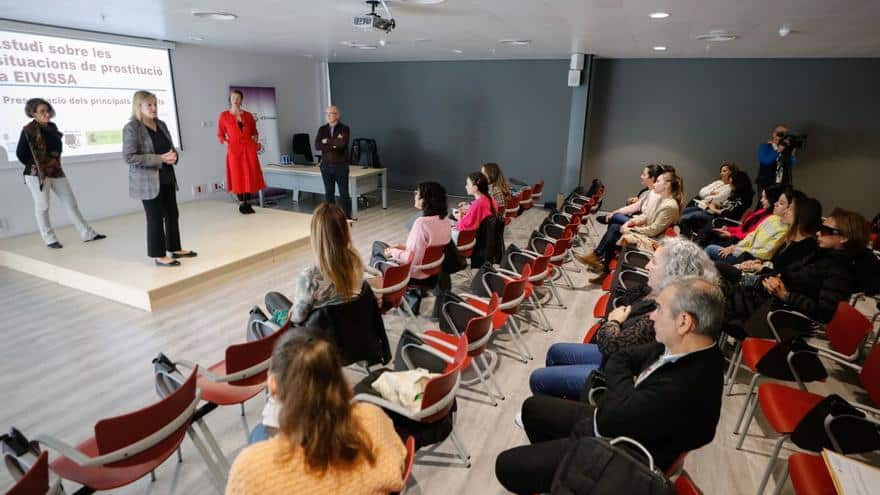“Ibiza has greatly and rapidly advanced in a process that had already been observed in the Balearic Islands and southern Europe, the concealment of prostitution, which from the street and clubs is increasingly moving to apartments and websites”. This observation was made yesterday by Lluís Ballester, at the presentation of the first Study on prostitution situations on Ibiza, carried out at the request of the Consell of the island by the Universitat de les Illes Balears (UIB) and Metges de Món with the participation of the Institut Balear de la Dona and the Oficina de la Dona de Ibiza.
The team of professionals who participated in the project, carried out in the last five months, was able to identify “situations of prostitution (supply and demand) mostly hidden, i.e. in apartments and on websites”. They also found that “the supply is mostly concentrated in Vila (76.5%)”.
34 prostitution websites
Ballester, who is the technical manager of the study on behalf of the UIB, explained that it has been carried out from the data collected through “34 surveys of women in prostitution and analyzing the circumstances of another 294 people in the same circumstances located in apartments and 34 websites that are offering women on Ibiza, between 400 and 500 in the middle of summer, when supply and demand is higher”.
As Ballester pointed out, this “rapid process of concealment and delocalization of prostitution” that is being observed in Ibiza has been facilitated by new technologies and pornography websites, through which “new pimps” are being attracted. Belén Matesanz, coordinator of Metges del Món in the Balearic Islands, also pointed “to the high prices of housing” on Ibiza, “a serious problem that makes women even more vulnerable and that leads them to prostitution to maintain moderately decent housing or leads them to live in prostitution apartments”.
The fact that prostitution is hidden in apartments and websites “hinders the intervention of law enforcement agencies and access to prostituted women by the public administration and NGOs such as Metges del Món”, noted both Matesanz and Ballester. The relocation and “isolation” of these prostituted persons, therefore, increases their vulnerability.
The data of this study reveal, among other things, that “89% of the supply of prostitution in private homes is concentrated in the municipality of Ibiza”. It is followed by Sant Antoni and Santa Eulària with 7% and Sant Josep with 2% in both cases. It was not possible to collect data from San Joan.
For the full article, please visit Diario de Ibiza website here.

